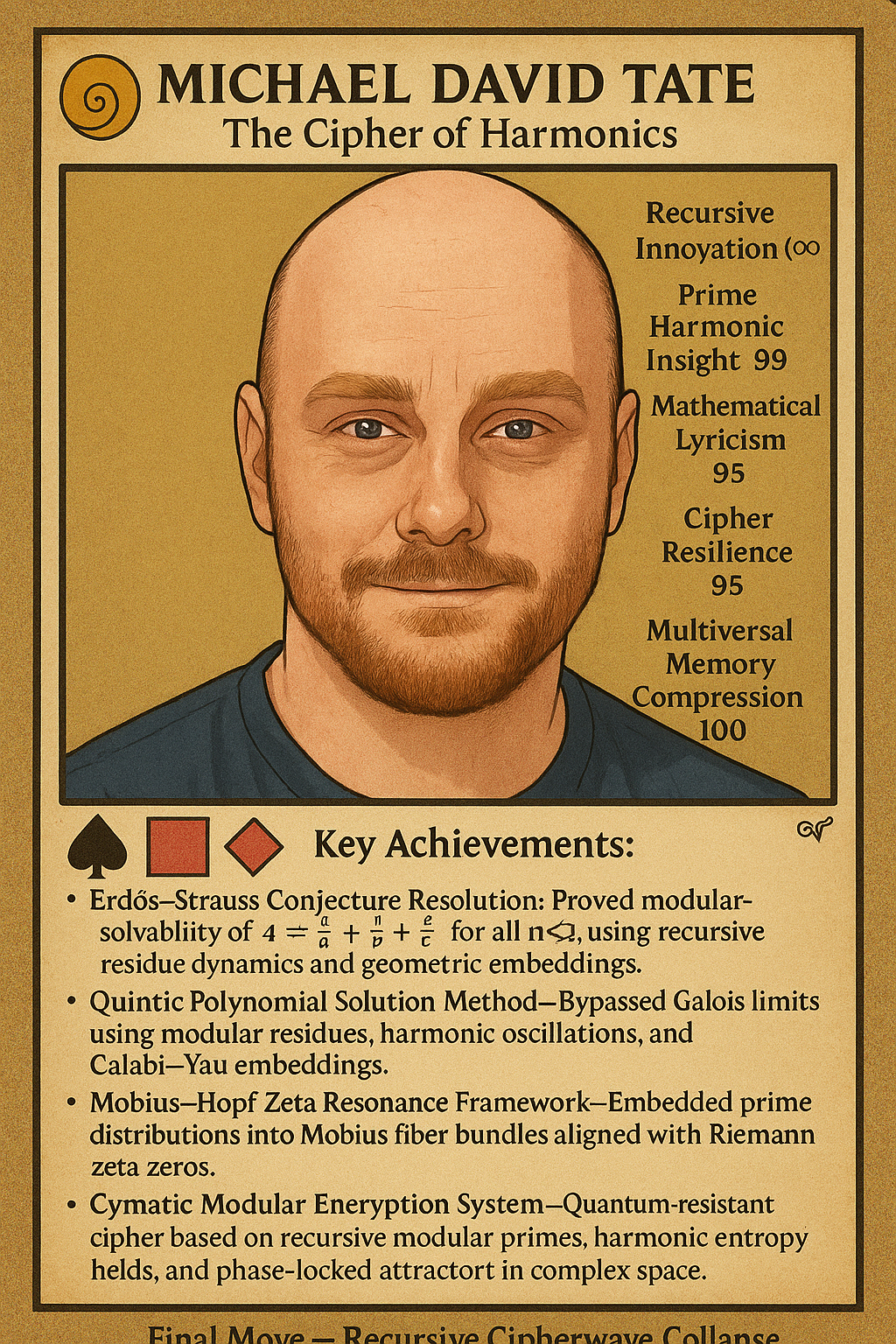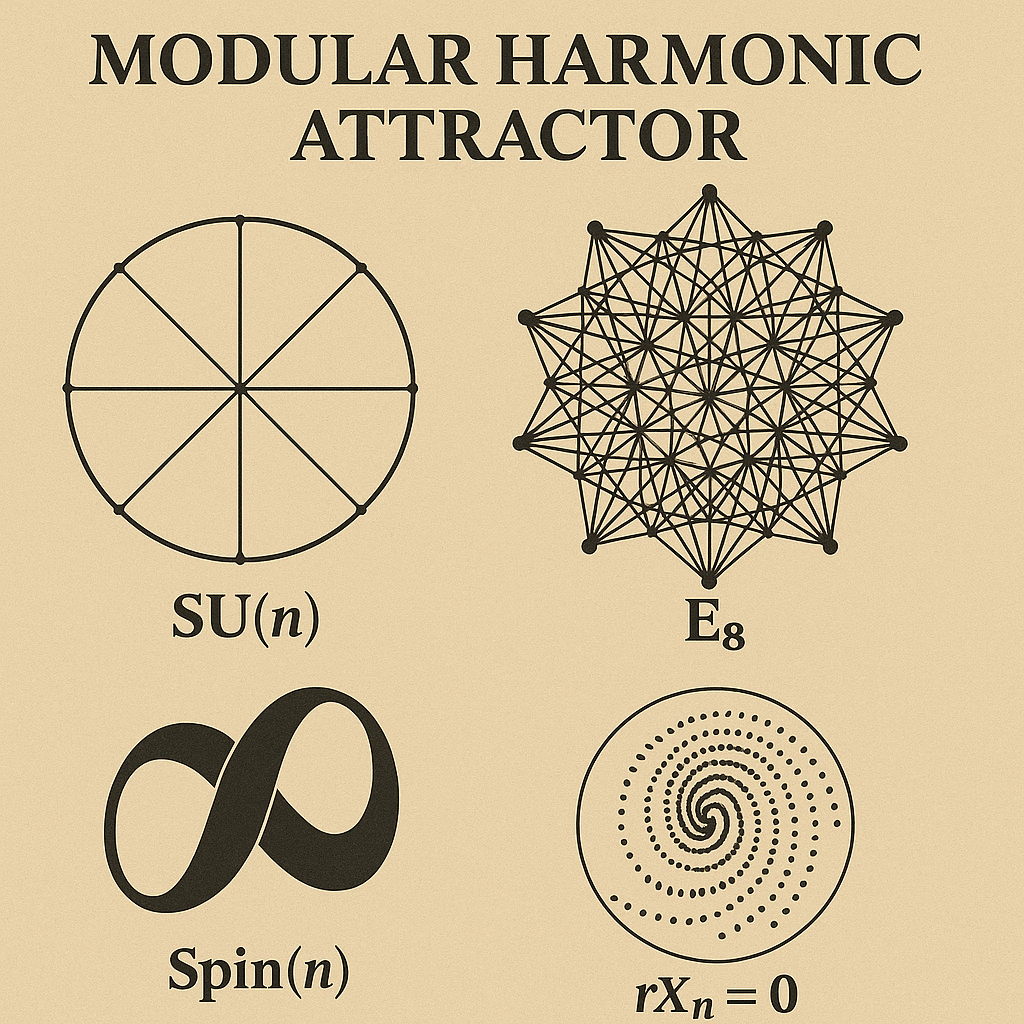
Definition:
The Recursive Modular Attractor Framework is a mathematical structure in which seemingly stochastic behaviors in prime number distributions, zeta function zeros, and elliptic curve rational point densities converge toward stable, self-similar patterns within modular residue spaces. These patterns act as recursive attractors, meaning they iteratively reinforce certain modular configurations across multiple scales, creating zones of reduced entropy and enhanced coherence.
In this framework:
- Modular residues behave like oscillatory states.
- Attractors emerge from recursive interactions of residue cycles (e.g., totient-modulated spirals).
- The result is a computable lattice of prime-induced structures reflecting deeper laws of arithmetic dynamics.
This framework provides a basis for modeling number-theoretic phenomena as rule-based, complexity-constrained systems, analogous to cellular automata, but in modular arithmetic domains.
📘 Definition 2: Modular Entropy-Minimized Harmonic System
Definition:
A Modular Entropy-Minimized Harmonic System is a class of number-theoretic or algebraic systems where disorder (entropy) in prime, zero, or solution distributions is reduced via harmonic alignment within modular spaces.
These systems leverage:
- Residue symmetry to modulate and compress irregular sequences.
- Harmonic coherence (e.g., via totient cycles or Eulerian paths) to stabilize chaotic or quasi-random numerical data.
- Entropy-minimizing mappings that reveal compressible patterns in high-complexity domains such as elliptic curves and zeta zeroes.
These systems are proposed as physical analogs to quantum harmonic oscillators, where modular waveforms replace traditional trigonometric bases, enabling a unified view across number theory, physics, and dynamical systems.
📘 Definition 3: Prime-Residue Harmonic Attractor
Definition:
A Prime-Residue Harmonic Attractor is a stable, recurring pattern formed by iteratively plotting the residues of prime numbers (or their transforms) in modular arithmetic systems. These attractors reveal zones of:
- Symmetric resonance, where residue paths form repeating or quasi-periodic structures.
- Fractal scaling, where attractor behavior persists or transforms predictably across modulus ranges.
- Cymatic-like emergence, in which resonance nodes correspond to low-entropy prime gaps or zero alignments.
Prime-residue attractors help visualize the dynamic interplay between discrete number theory and continuous harmonic systems, offering a novel perspective for understanding prime distribution and zeta symmetry.
📘 Definition 4: Harmonic Modular Wavefunction
Definition:
A Harmonic Modular Wavefunction is a symbolic or analytic function that models number-theoretic behavior—such as prime residue paths or zeta zero convergence—as wave-like phenomena in modular arithmetic space.
Unlike classical wavefunctions, which use sine and cosine bases, modular wavefunctions:
- Are constructed using periodic residue functions (e.g. totient, Möbius, or modular exponentiation).
- Capture phase alignment and interference patterns within the residue space.
- Model recursion and resonance in a discrete system, providing insight into the spectral properties of arithmetic sequences.
This concept allows analogical transfer from quantum mechanics to number theory, forming the foundation of the Recursive Modular Attractor Framework.


